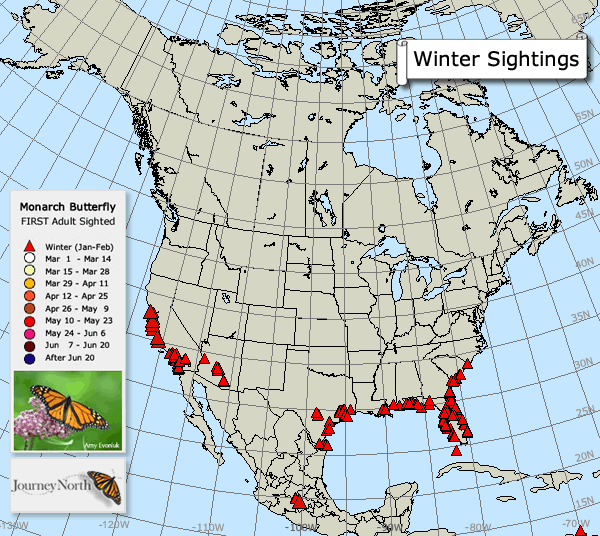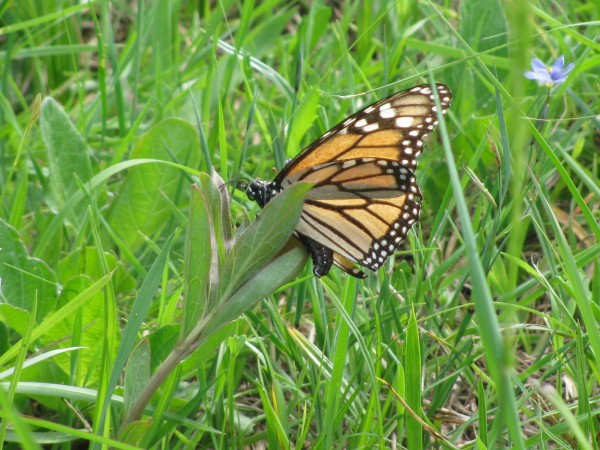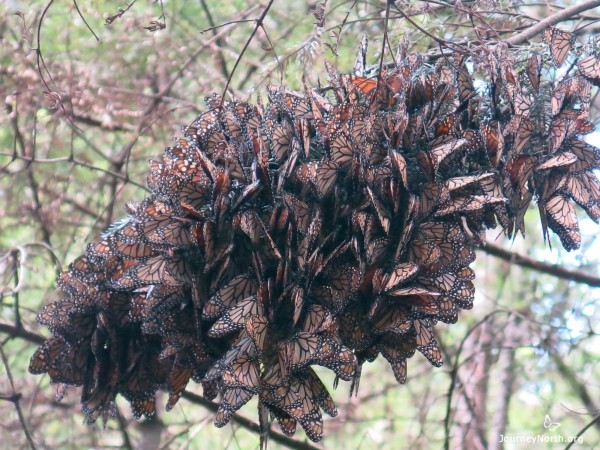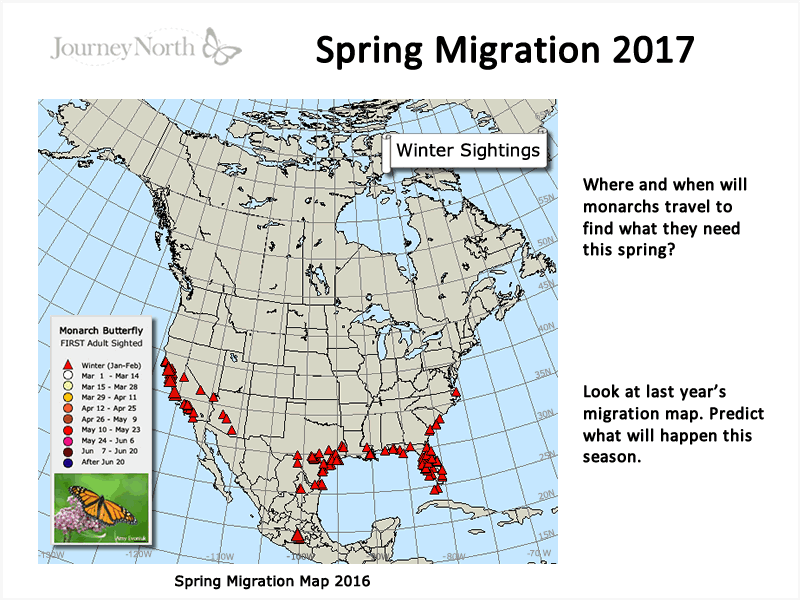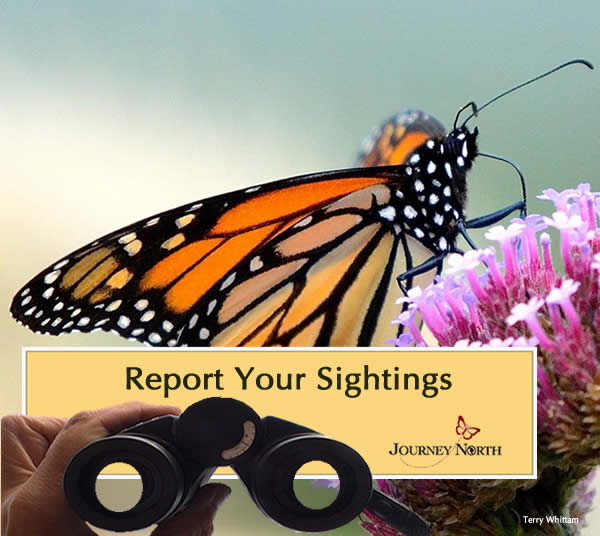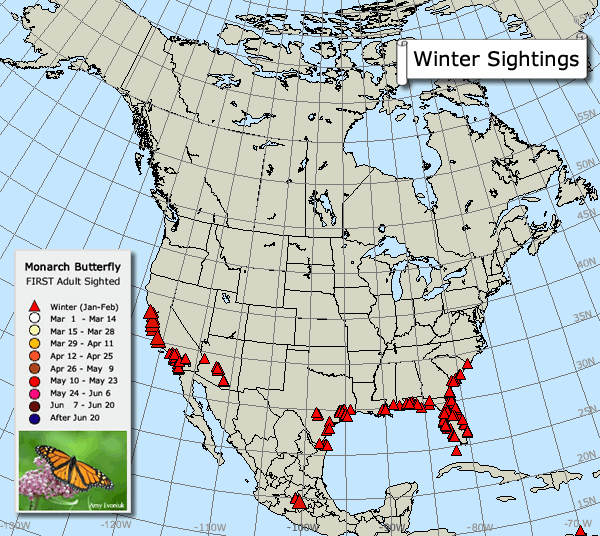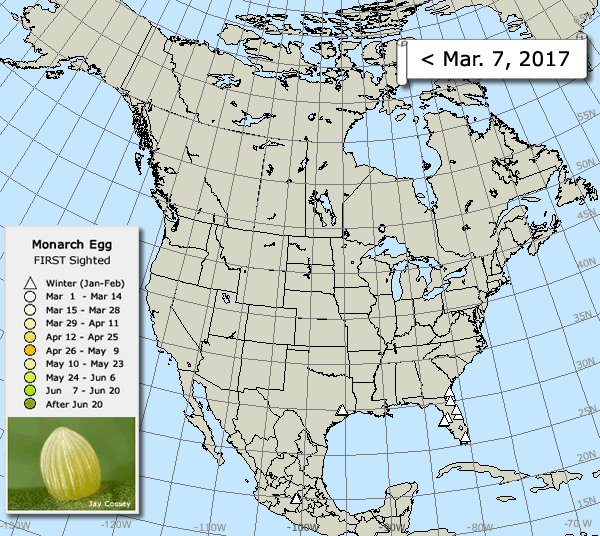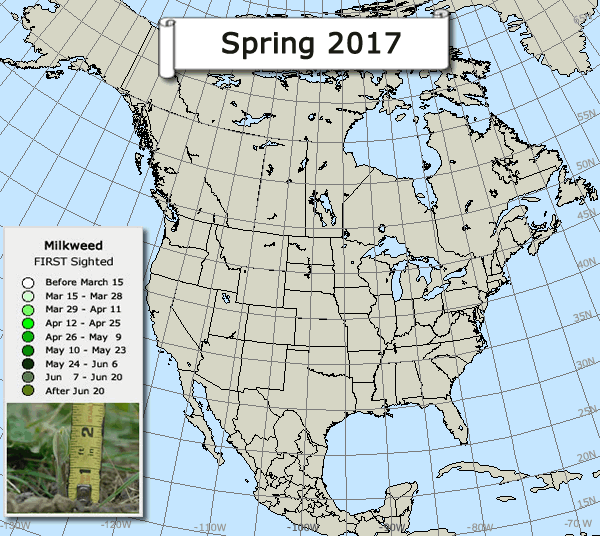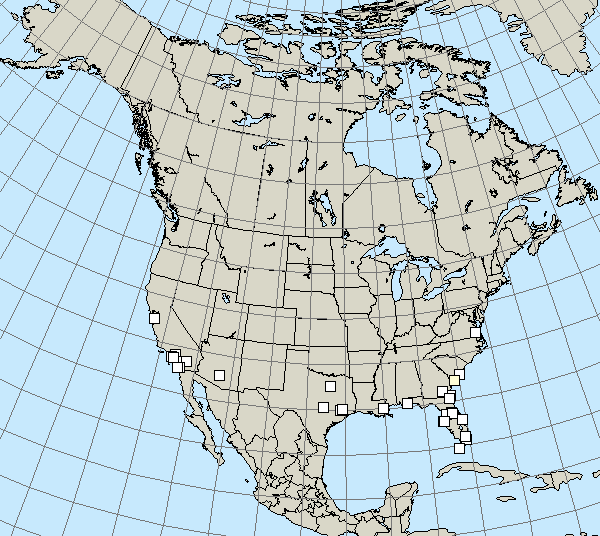The Next Generation
Laying eggs as they travel, northbound butterflies are delivering the next generation.
Northward and Eastward
The migration's leading edge has now advanced 1,000 miles from the winter sanctuaries in Mexico and is approaching 36°N in Oklahoma.
"The migration is moving quickly, at least from what I have seen. I saw a few monarchs this past weekend that were booking it north. Not interested in anything...no milkweed...no nectar," said Chuck in Driftwood, Texas.
Dr. Chip Taylor of Monarch Watch notes:
"We are experiencing another early spring and it’s no secret that springs are getting earlier and warmer. These changes have consequences and biologists are busy trying to understand the various impacts..." Read more...
Critical Time: The Next 6 Weeks
It's a critical time as the monarchs race northward to produce the next generation. Now in reproductive condition, the biological clock is ticking. Most of these monarchs will reach the end of their lives by the end of April.
According to Journey North observers, the butterflies have been busy with egg-laying in Texas:
"What a wonderful monarch day in the nursery! I looked at 152 milkweed plants and found 89 eggs and 9 larvae," notes Kathy of Montgomery.
"I found 21 eggs on the milkweed in my back yard," wrote Jill from Vernon.
"We checked 127 milkweed plants at Herff Farm and found 4 eggs!" remarked Mary of Boerne.
Critical Habitat
The size of the next generation will largely be determined by the quality of breeding habitat in Texas, and neighboring states to a lesser extent. Reproduction is concentrated in this region in early spring where the temperatures are favorable and the vegetation is ready.
However, it's important to note that the extent of breeding along the migration pathway in northern Mexico is not known. This is an area where more research is needed and why reports like this from Gómez Farías, Tamaulipas are valuable:
"Today March 27 in I saw about 50 monarchs — some were in flight, some were feeding, and others were leaving eggs of the next generation." More
More Monarchs Remain!
To her great surprise, Estela found a substantial number of monarchs still clustering at El Rosario and Sierra Chincua.
"Estelita, have you seen monarchs are still at the sanctuaries?" Read more...



